Sudan/Mali/Flavifasciata Spiny-tailed Lizard Uromastyx dispar
 Sudan Spiny-tailed
Sudan Spiny-tailed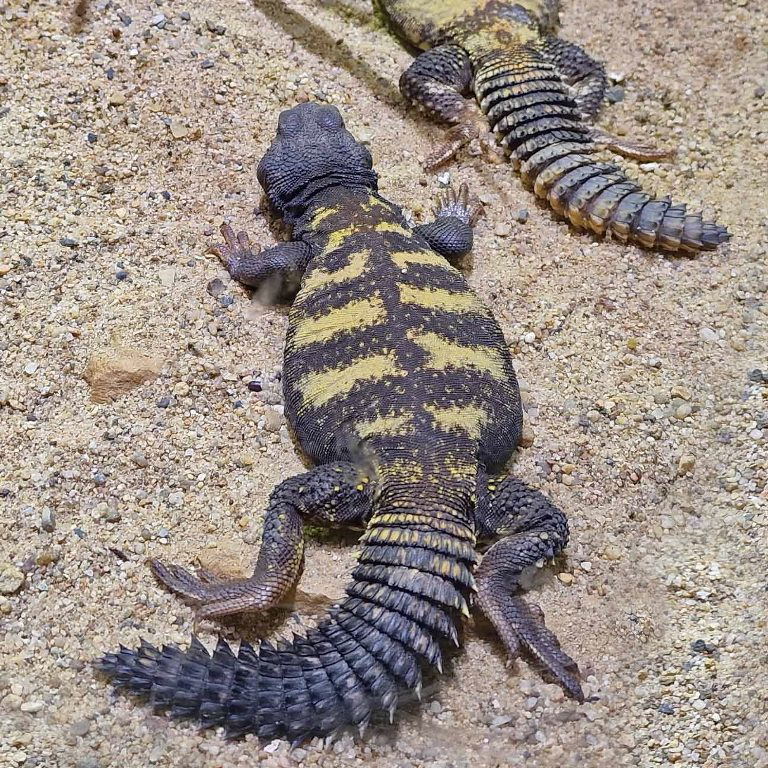 Flavifasciata Spiny-tailed
Flavifasciata Spiny-tailed Mali Spiny-tailed
Mali Spiny-tailedSpiny-tailed Lizards of North Africa and the Middle East have spiny tails used for defence and flat bodies with loose
skin which enable them to hide in narrow rock crevices. This Spiny-tailed has 3 subspecies in 3 non-contiguous geographic regions: the
nominal Uromastyx dispar dispar (above left), U. d. flavifasciata (above centre) and U. d. maliensis (above right).



The nominal Sudan Spiny-tailed (above) is native to sandy deserts of some of Sudan and some of neighbouring Chad.

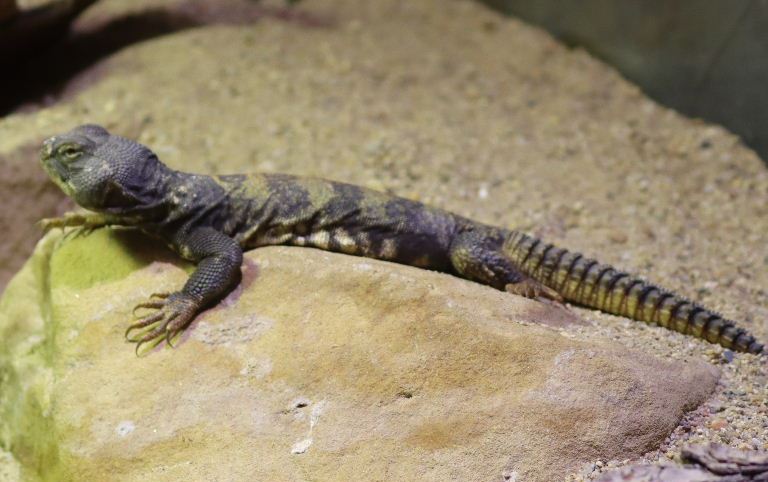
The Flavifasciata Spiny-tailed Lizard is native to desert of western Sahara through to southwestern Algeria. Some treat it as a
separate species: Uromastyx flavifasciata.
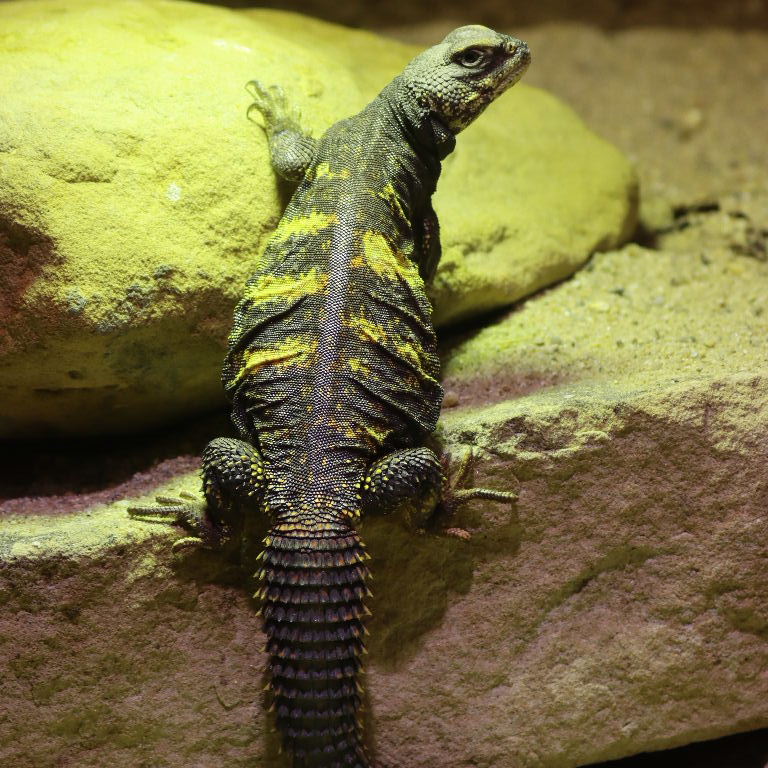
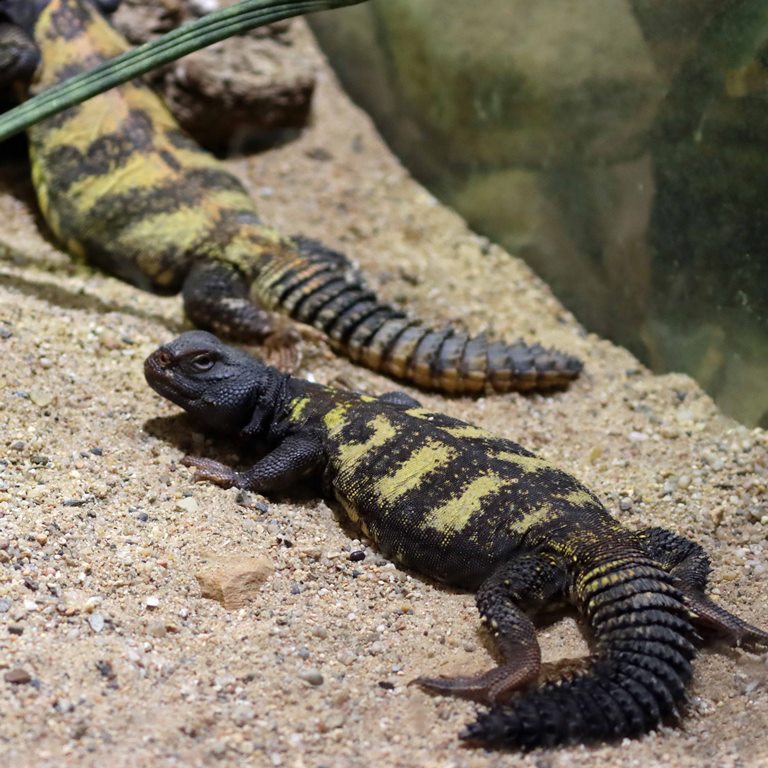
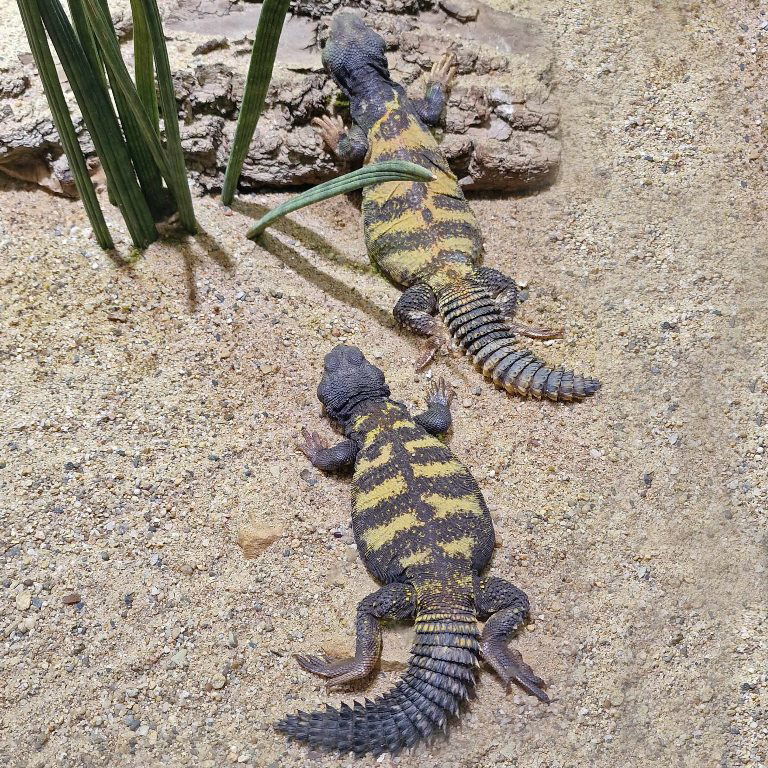
The Latin name "flavifasciata" means "yellow-banded", referring to the 4-5 light-coloured bands
on the lizard's back.



The yellow bands are not always clearly visible.



The Mali Spiny-tailed, as expected, is native to deserts of Mali and also to southern Algeria and possibly part of Niger.

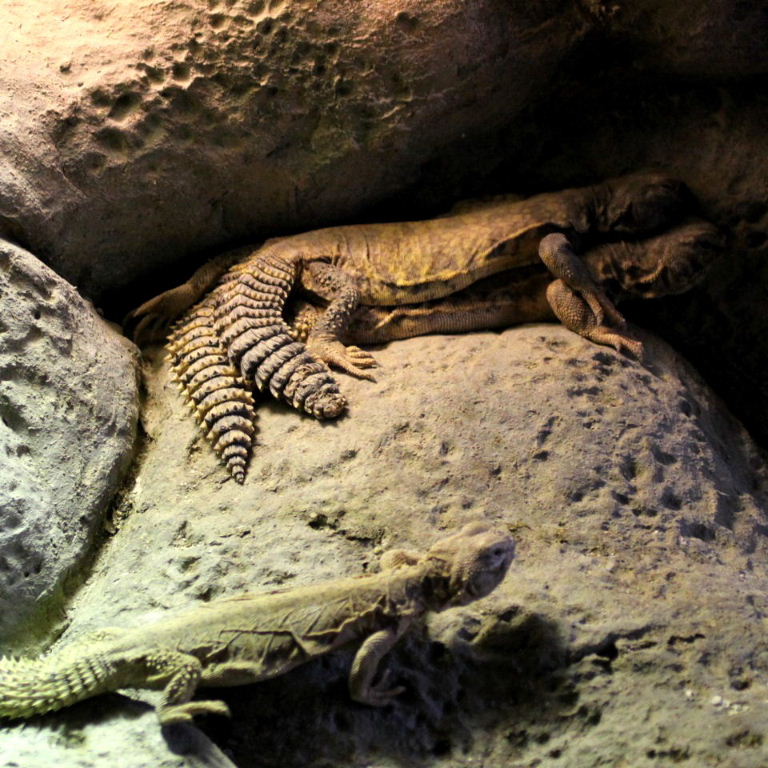

The larger male, whose back becomes yellow and patterned in the breeding season, can grow to a length of 15 inches.



Adult spiny-tails are mainly herbivorous and can regulate body temperature by turning darker (cold) or lighter (hot).

